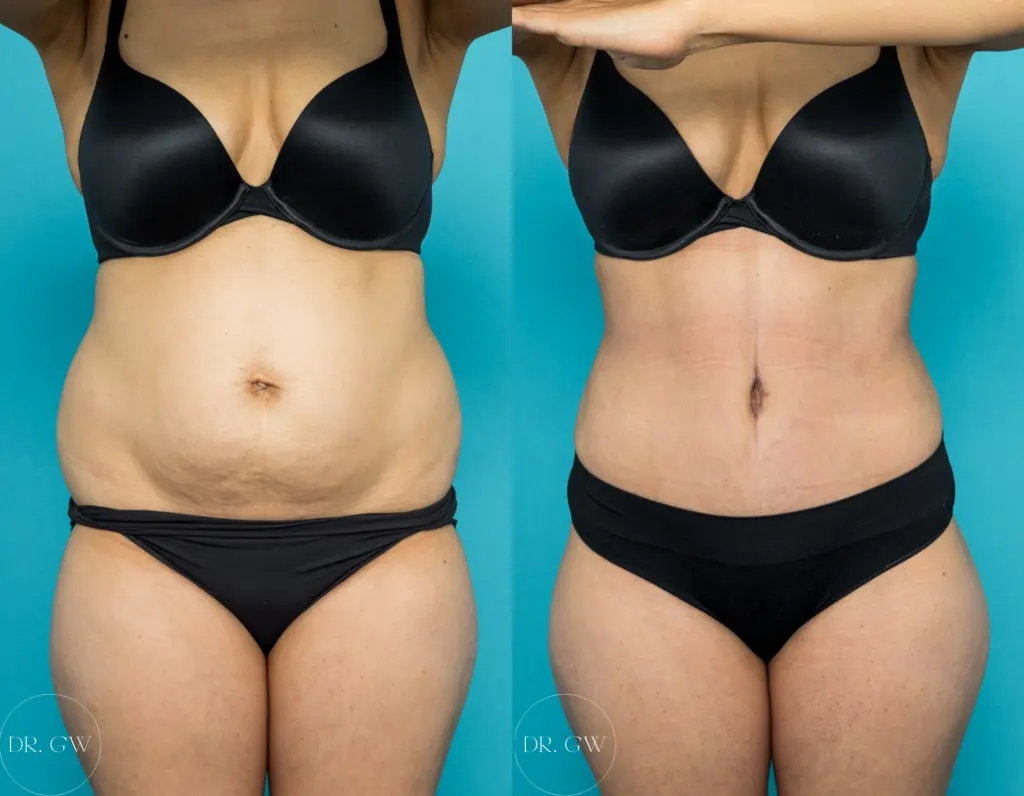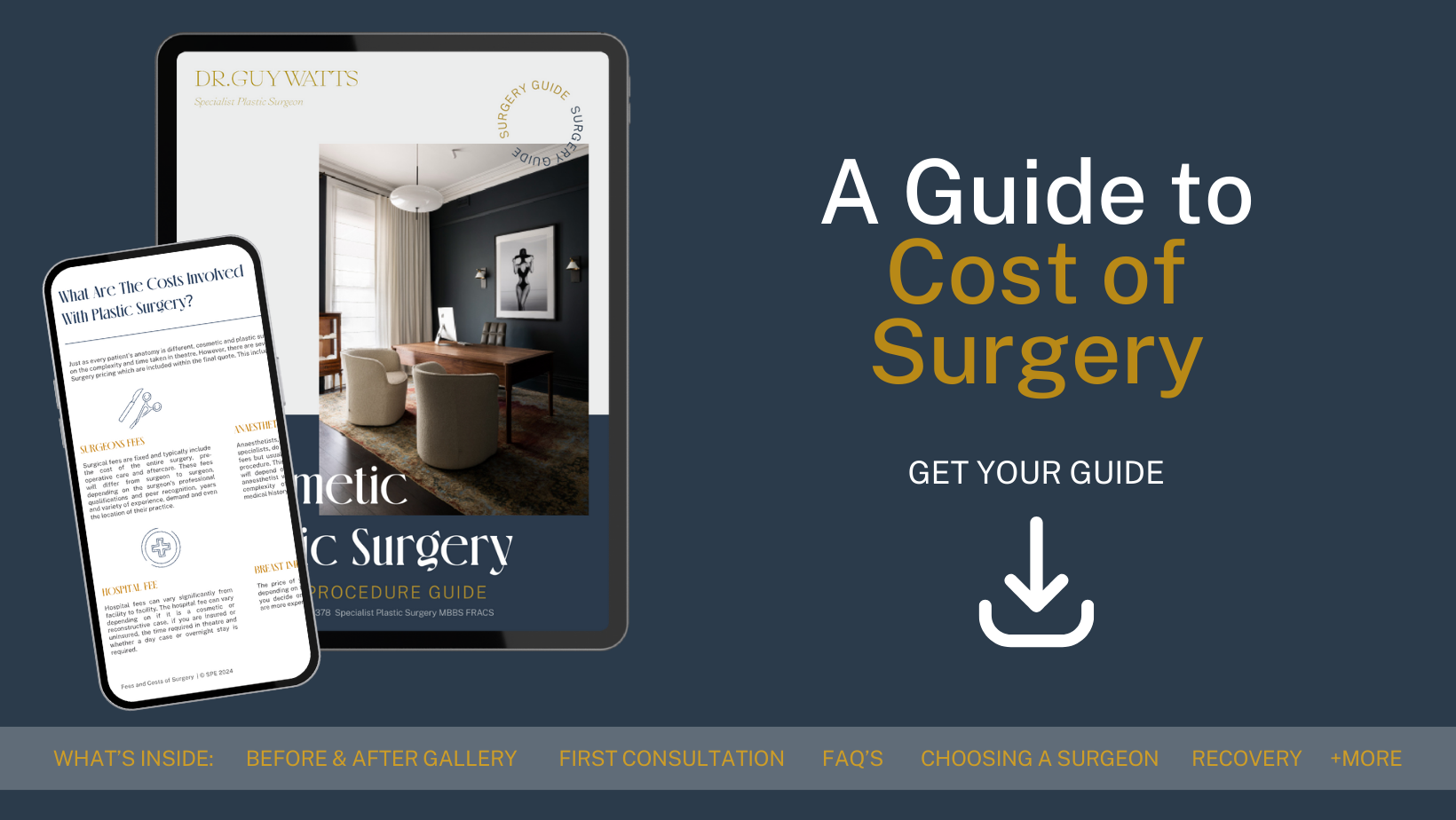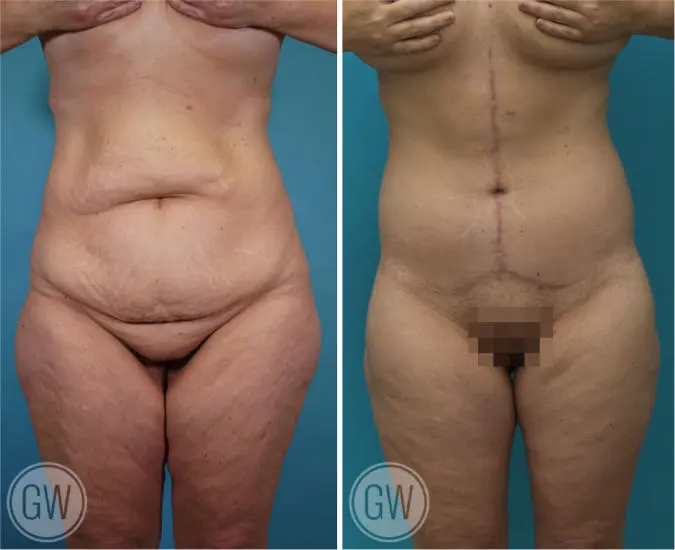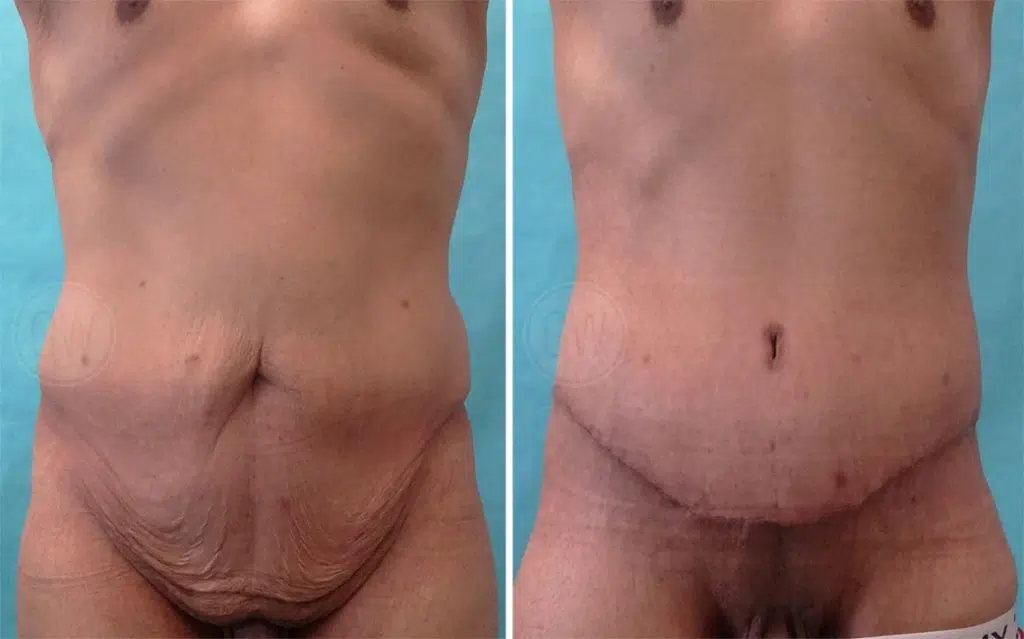
28 Jul Different Types of Belly Fat
For many adults living in Perth, Western Australia, concerns about abdominal fullness or persistent belly fat are common – particularly as the body changes due to weight fluctuations, ageing, or life events such as pregnancy. Whether these concerns arise from functional limitations, physical discomfort, or a desire for improved abdominal contour, understanding the type of fat involved is the first step toward informed decision-making.
Importantly, not all belly fat is the same. While some types can be addressed through surgical procedures, others are better managed through lifestyle and medical interventions. Knowing the difference can help patients avoid unnecessary treatments or unrealistic expectations.
Take our quiz, and find out if you are ready for surgery
Dr. Guy Watts, a Specialist Plastic & Reconstructive Surgeon in Perth, is committed to providing clear, evidence-based information. His focus is on educating patients about the anatomy of belly fat and guiding them towards appropriate, personalised care solutions based on accurate medical assessment.
The Two Primary Types of Belly Fat
Subcutaneous Fat
Subcutaneous fat is the most visible and palpable type of fat on the body. It lies directly beneath the skin and can be pinched between the fingers, often giving the abdomen a soft, pliable appearance. This fat acts as the body’s main energy reserve and provides insulation and cushioning against trauma.
From a clinical perspective, subcutaneous fat is generally less of a health concern than visceral fat, but it can still cause practical and cosmetic challenges. Individuals may notice:
- A persistent “pouch” of fat in the lower abdomen, particularly after childbirth or significant weight loss.
- Skin folds or overhang, which can trap moisture and lead to irritation, chafing, or fungal infections.
- Difficulty with clothing fit, especially around the waistline, making it hard to find comfortable, well-fitting garments.
- A sense of heaviness in the abdominal region, which may affect mobility or posture in some individuals.
Surgically, subcutaneous fat and associated excess skin can be removed through procedures such as abdominoplasty, where indicated. However, this is not a substitute for weight loss and is best suited for individuals who are already at a stable, healthy weight but experiencing persistent contour issues.
Visceral Fat
Visceral fat is stored deep within the abdominal cavity and surrounds internal organs like the liver, intestines, and pancreas. Unlike subcutaneous fat, it is not visible or pinchable and is often identified only through waist measurement, clinical examination, or imaging.
This type of fat plays a more active role in metabolism and hormone regulation, and in excess, it contributes to serious health conditions. Research shows that visceral fat is linked to:
- Insulin resistance and type 2 diabetes, as it disrupts normal glucose metabolism.
- Increased cardiovascular risk, including elevated blood pressure and abnormal cholesterol profiles.
- Chronic low-grade inflammation, which may contribute to the development of various diseases, including certain cancers.
- Higher likelihood of liver dysfunction, particularly non-alcoholic fatty liver disease.
Factors influencing visceral fat accumulation include genetics, hormonal changes (particularly during menopause), sedentary lifestyle, chronic stress (which raises cortisol levels), and a diet high in processed sugars and saturated fats.
Unlike subcutaneous fat, visceral fat cannot be removed surgically. Reducing visceral fat requires long-term lifestyle changes including improved dietary habits, regular aerobic and resistance exercise, and, in some cases, medical support or supervised weight management programs.
DOWNLOAD DR WATTS’ GUIDE TO COST OF SURGERY

Why the Difference Is Important
Understanding whether a person has excess subcutaneous or visceral fat is essential for determining what options – if any – are available surgically.
Subcutaneous fat may be safely removed or reshaped through surgical procedures performed by qualified plastic surgeons. These procedures are particularly helpful in:
- Improving abdominal contour and achieving a smaller waist, especially after pregnancy or significant weight loss.
- Reducing the burden of redundant skin, which may cause irritation or interfere with daily activities.
- Restoring muscle alignment, particularly in patients with abdominal muscle separation (diastasis recti).
Visceral fat, however, sits behind the abdominal wall and cannot be accessed through surgery. Attempting to treat visceral fullness surgically would not only be ineffective but medically unsafe. Patients with high levels of visceral fat often exhibit a rounded, firm abdomen with minimal excess skin or pinchable fat.
Dr. Guy Watts, a highly regarded Specialist Plastic & Reconstructive Surgeon in Perth, stresses this distinction during consultations. He ensures that every patient understands that surgical intervention is not a weight loss tool and cannot address the health risks associated with visceral fat. His role is to guide patients towards the most appropriate care – whether that involves surgery, lifestyle change, or multidisciplinary medical input.
Assessing Belly Fat: What Happens During a Consultation
During a consultation at Dr. Guy Watts’ Perth clinic, the assessment process is thorough and tailored to the individual. It typically includes:
- Detailed medical history review, including weight history, past pregnancies, lifestyle habits, and any medical conditions that may affect fat distribution or surgical outcomes.
- Physical examination of the abdominal wall, assessing skin quality, fat distribution, and muscle integrity. Dr. Watts examines whether the fat is superficial and soft (subcutaneous) or internal and firm (visceral).
- Waist circumference measurement, a simple and widely accepted screening tool for central fat accumulation. Waist measurements over 88 cm in women and 102 cm in men can signal a higher risk of visceral fat-related disease.
- Body composition and weight stability evaluation, to determine whether the patient is at a sustainable and appropriate weight for surgical intervention.
- Discussion about lifestyle, fitness, and nutrition, as these factors often influence both fat type and suitability for surgery.
In selected cases, patients may also be referred for imaging tests such as ultrasound or CT scans, particularly when underlying conditions or anatomical anomalies are suspected.
Dr. Watts ensures that each assessment is patient-specific and grounded in clinical evidence, allowing him to recommend treatment options that are not only effective but also ethically appropriate.
Can Plastic Surgery Help? What You Need to Know
Plastic surgery can offer meaningful improvements in abdominal shape and contour – but only under the right conditions. Procedures such as abdominoplasty are designed to:
- Remove excess skin and subcutaneous fat from the lower abdomen.
- Tighten weakened or separated abdominal muscles, which often occur after pregnancy or substantial weight changes.
- Reposition and reinforce the abdominal wall, providing improved physical comfort and a more proportionate appearance.
Candidates for this type of surgery typically meet the following criteria:
- They are in good general health and free from significant chronic illnesses that could complicate recovery.
- Their weight is stable and within a medically appropriate range.
- They have realistic expectations and understand that surgery is for contour enhancement – not weight reduction or treatment of visceral fat.
Patients with a high volume of visceral fat may be advised to focus on lifestyle changes before considering any procedure. Attempting surgery in these cases may not yield the desired outcomes and could increase the risk of complications.
At his Perth-based practice, Dr. Guy Watts follows a meticulous approach to candidacy. Every recommendation is based on anatomical findings, medical history, and current health. He provides clarity around what is possible – and equally important, what is not – so that patients can make decisions based on accurate, responsible medical advice.
When to Seek Specialist Advice
Although not everyone with abdominal fat requires surgical intervention, there are situations where seeking an expert opinion may be beneficial. Consider scheduling a consultation if:
- You’ve lost a significant amount of weight, and are now left with persistent abdominal fullness or loose, overhanging skin that interferes with clothing or activity.
- You’ve completed your family, and would like to address physical changes such as stretched skin or separated abdominal muscles that haven’t responded to exercise.
- You experience physical discomfort or hygiene issues caused by abdominal skin folds, including chafing, rashes, or difficulty maintaining skin hygiene.
- Your fitness and nutrition have stabilised, but the shape or tone of your abdomen has not responded to ongoing efforts.
- You are emotionally or physically affected by changes to your body and would benefit from an expert medical perspective on what is achievable.
In these scenarios, Dr. Guy Watts can provide a comprehensive evaluation, helping individuals in Perth and surrounding areas understand whether they are suitable candidates for surgical intervention – or whether other strategies would be more beneficial.
FAQs about Subcutaneous vs Visceral Belly Fat and Surgical Options
Closing Summary
The term “belly fat” is often used broadly, but it’s important to distinguish between subcutaneous fat, which lies just beneath the skin, and visceral fat, which surrounds the internal organs. These two types of fat differ significantly in their appearance, health risks, and how they are managed.
While plastic surgery can assist in removing subcutaneous fat and redundant skin, it does NOT target visceral fat. That type of fat is best addressed through medically guided lifestyle changes.
Patients in Perth, Western Australia, considering abdominal contouring are encouraged to seek informed advice from a qualified medical professional. Dr. Guy Watts, Specialist Plastic & Reconstructive Surgeon, provides patients with the clarity they need – grounded in ethics, clinical precision, and respect for individual goals.
To learn more about your options or schedule a consultation with Dr. Guy Watts in Perth, visit the website and explore patient education resources designed to support you in making confident, evidence-based decisions.
Further Reading
- Please read on Guy Watts’ blog on How Do I Get a Flat Stomach or Flatter Abdomen
- Please read on Guy Watts’ blog on Changed Abdomen After Baby: Is It Diastasis Recti, Abdominal Fat, or Both?
About Dr. Guy Watts – MED0001539378
FRACS (Plas) – Specialist Plastic Surgeon In Perth WA
Dr. Guy Watts is a Specialist Plastic Surgeon (AHPRA MED0001539378) with an extensive career that spans across renowned plastic surgery clinics worldwide. His experience has been honed through invaluable experiences at esteemed establishments such as the New York Eye and Ear Infirmary and the renowned Pitanguy Clinic in Brazil.
Having collaborated with the foremost cosmetic plastic surgeons on a global scale, Dr. Watts has chosen to return to Perth after a 17-year journey of intensive training and invaluable professional experience to bring the latest practices and technology in cosmetic plastic surgery to his patients.
Dr. Watts is a Fellow of the Royal Australasian College of Surgeons (FRACS) and a Member of the Australian Society of Plastic Surgeons (ASPS), Australasian Society of Aesthetic Plastic Surgeons (ASAPS) and the International Society of Aesthetic Plastic Surgeons (ISAPS).
Read about the potential Risks and Complications of Surgery
Read the Patient Information and Resources
About CLINISPA
Clinispa is Dr Watts’ bespoke medical clinic performing Cosmetic Aesthetic treatments. At Clinispa, we offer advanced clinical treatments in a luxurious and calming environment, tailored to support your skin’s health and appearance.
Clinispa aesthetic services are performed by Dr Guy Watts’ nursing professionals, who have a passion for and solid understanding of facial aesthetics.
All Clinispa clients are considered individually, with a personalised treatment plan consisting of advanced scientific approaches to cosmetic aesthetics. We incorporate innovative technologies in conjunction with superiorly formulated skin care.
For more information about the full range of Clinispa Aesthetic of Cosmetic Treatments visit the Clinispa website










Sorry, the comment form is closed at this time.